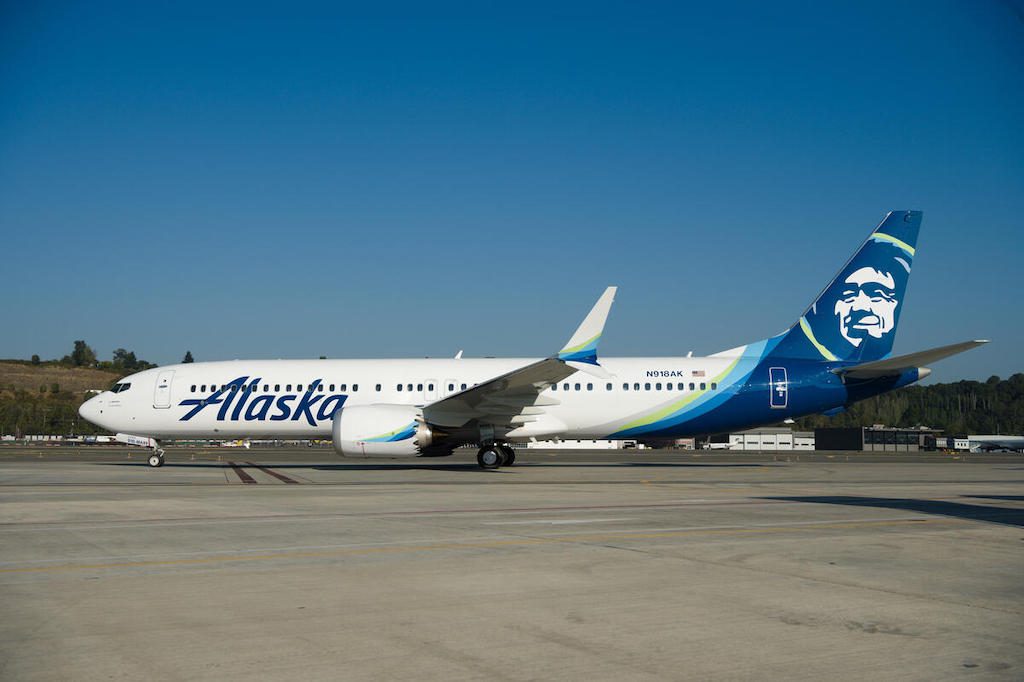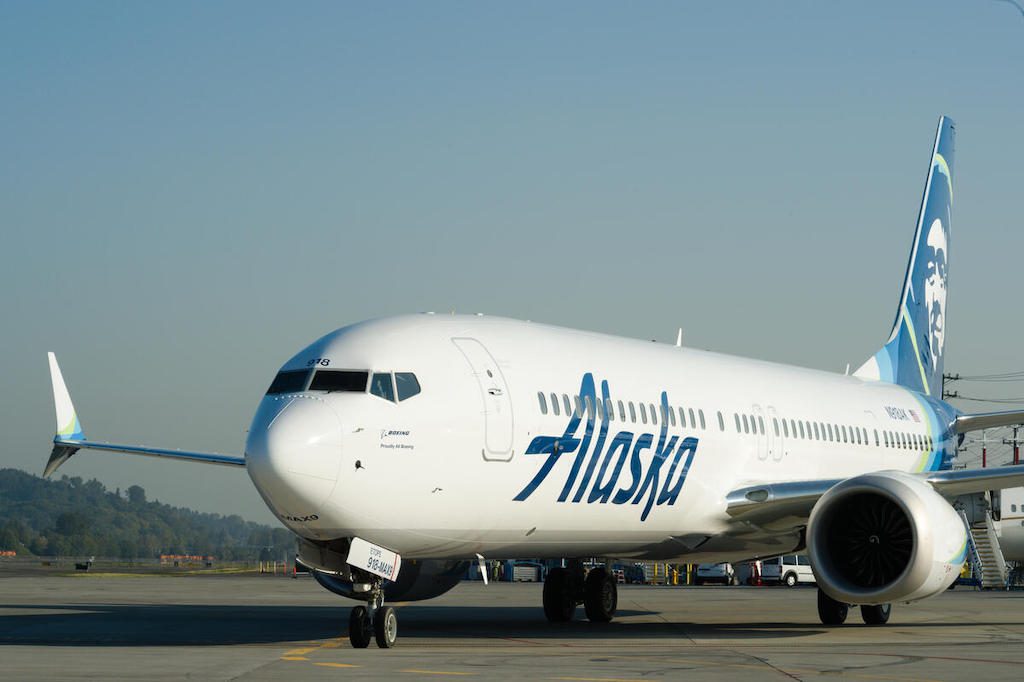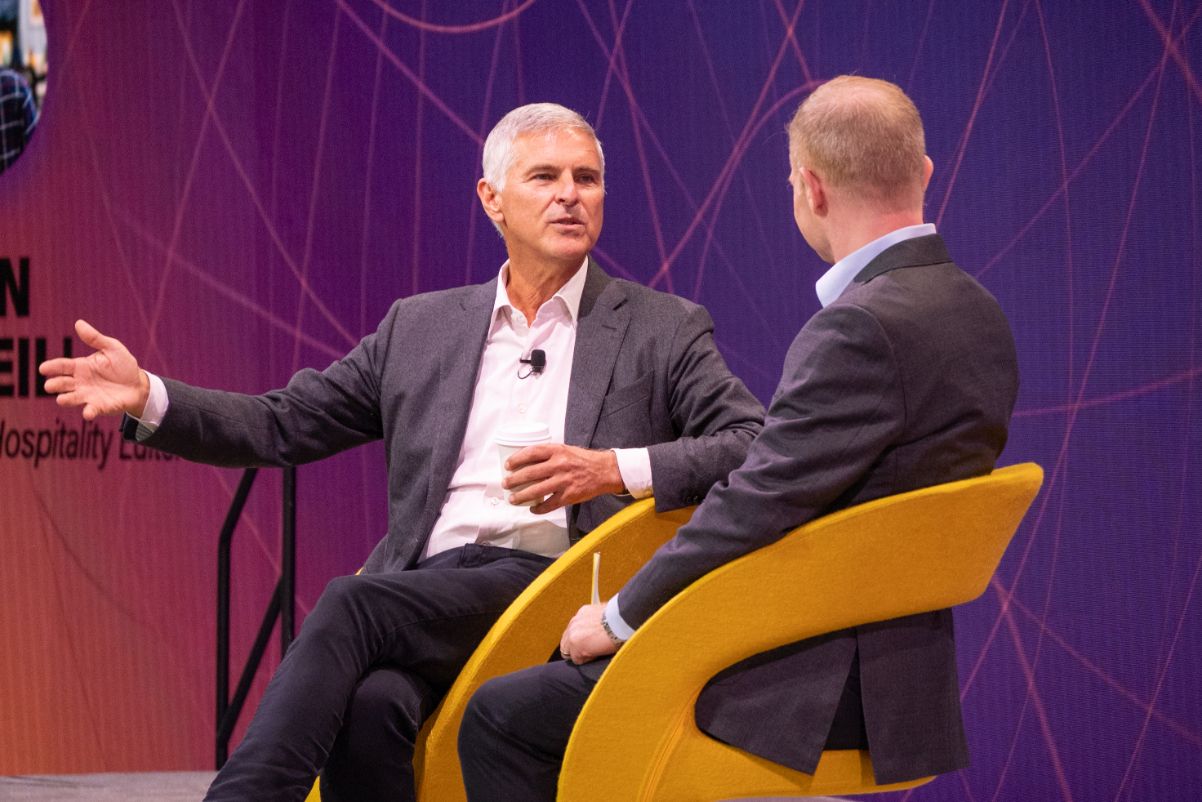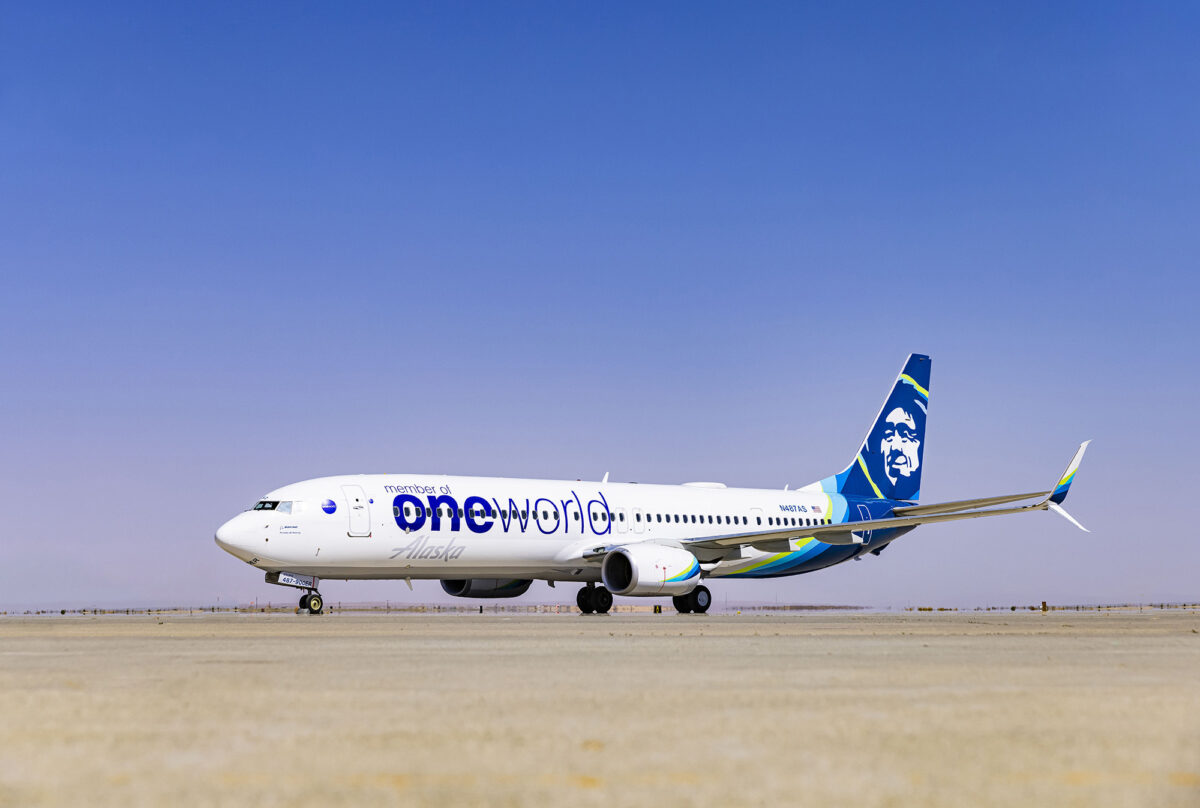The Inside Story of How Alaska Airlines Went All-In on the Returning Boeing 737 Max

Skift Take
December 14, 2016 was a momentous day for Alaska Airlines. The carrier closed its $2.6 billion acquisition of Virgin America, vaulting it ahead of fellow bidder JetBlue Airways to become the fifth largest airline by passengers in the U.S.
"Together, we'll offer more flights, with low fares, more rewards and more for customers to love,” said Alaska CEO Brad Tilden that day. “The two airlines may look different, but our core customer and employee focus is very much the same."
Veiled by the optimism of the day, was the seed of a strategic challenge for Alaska that would weigh on it in the years to come. Virgin, while having a complementary route network, was an all-Airbus A320 family operator whereas Alaska touted “proudly all Boeing” on the noses of its 150-plus 737 jets.
“The study and the work basically started the day after the merger,” Alaska senior vice president of fleet, finance & alliances Nathaniel Pieper told Skift in an interview. In other words, executives at the airline’s Seattle headquarters began weighing what to do about Virgin's 61 A319s and A320s since December 15, 2016.
Alaska finally solved the challenge nearly four-years to the day of buying Virgin America. On December 22, the carrier ordered 23 737 Max 9 jets that, when combined with a deal to lease 13 Maxes the month before, would allow it to be rid of the former Virgin aircraft by 2023. However, Alaska will not return to its “proudly all Boeing” moniker: 10 A321neos ordered by Virgin but only flown by Alaska will remain for the foreseeable future.
The Max order, while notable considering the jet’s 20-plus month long grounding that ended in November, was expected but interviews by Skift reveal the complexity behind how the decision was rendered.
Alaska not only flies more 737s than A320s, it also has a multi-decade relationship with Boeing. The planemaker also happens to assemble the 737 in Renton, Wash., just a few miles from the airline’s corporate offices next to the Seattle-Tacoma International Airport. And while Alaska publicly considered both the A321neo and 737 Max 9 for its replacement needs, any industry expert will tell you the deal was Boeing’s to lose.
“There’s a rather strong case to be made that Alaska is actually closer now to Boeing than Southwest,” said The Air Current editor-in-chief Jon Ostrower in 2019. Southwest Airlines being the iconic 737 operator having flown the type nearly exclusively since its founding in 1971.

Alaska Airlines selected the 737 Max 9 to replace its Airbus A320 family fleet in December. (Photo courtesy of Alaska Airlines)
How Alaska’s Max Deal Came Together
Alaska hired Pieper to, among other things, figure out its fleet puzzle. He joined the airline in August 2019 after a career at Delta Air Lines where he was the driving force behind the carrier’s landmark widebody jet order for Airbus A330neos and A350s in 2014. The planes are now the backbone of Delta’s widebody fleet since it opted to retire its Boeing 777s early amid Covid-related cuts.
“We needed to answer what’s the right balance between being a sole-source aircraft operator or having a competitive tension between Airbus and Boeing going forward,” Pieper said of his team’s work in late 2019.
The A320 and 737 are long-standing rivals. The respective families are the best selling aircraft in the world with models available in various sizes and with different ranges. Most airlines opt for one family — for example, the A319neo, A320neo and A321neo make up one such grouping — and the operational savings associated with their common training and maintenance needs. For example, Southwest has long credited its all-737 fleet as a key part of its financial success.
Not every airline follows this one-family-fits-all mantra. The big three U.S. carriers American Airlines, Delta and United Airlines all fly a mix of A320 and 737 family jets. They argue that the commercial advantages of both planes outweigh the added complexities owing to the sheer size of their fleets. At the end of 2019, the smallest of among them flew at least three-times more jets than Alaska.
By early 2020, Alaska had a plan to play Airbus and Boeing off each other. It would consider the A321neo — a jet that airline executives sang the praises of to Wall Street analysts — and the 737 Max 9 to replace the A319s and A320s. Both jets benefitted from the latest engine technology and fuel efficiency on the market, plus had room for dozens more passengers than either of the Airbus models they would replace.
But these best laid plans were quickly waylaid by the coronavirus pandemic. Almost overnight, Alaska was flying a fraction of its schedule with much of its fleet parked. The airline retired 12 jets — all 10 of its A319s and two A320s — in the early days of the crisis.
Pieper, who is also Alaska's treasurer, and other executives shifted their focus to raising liquidity to keep the airline afloat. Daily losses — or cash burn — peaked at nearly $13 million a day in March, prompting a dire need for more cash in the bank. This arrived in the form of new debt and relief funds from the federal coronavirus aid package, or CARES Act. By summer, the carrier's leadership was comfortable that it could weather the crisis ahead.
“We were projecting we were going to return to our pre-Covid level in summer of 2022,” Pieper said of Alaska's crisis planning. A timeframe that was “actually a pretty good time, if you’re going to simplify your fleet, to go do it.”
By late summer, with liquidity up and cash burn down, Alaska returned to the question of its Airbus fleet. At that point, the airline still had 49 A320s on its books with another seven planes due to leave in 2021. The remaining 42 jets were still a sizable part of its fleet, flying on many of its core routes up and down the West Coast.
“Given the state of the market — Boeing with the Max and seeking to get that program back and running again, [and] knowing that Airbus wasn’t selling a lot of airplanes either — [we thought] ‘hmm, maybe it’s a good time to get into the market,’” said Pieper.
Airlines can lock in better deals buying in a downturn when planemakers are eager to sell planes to make up for lost orders. Boeing lost some 710 orders for the 737 Max, a combination of both the grounding and coronavirus, while Airbus netted a historically low 56 orders for the A320 family during 2020.
Alaska was not alone in this thinking. Irish discounter Ryanair inked a deal for 75 more Maxes in the weeks after the aircraft was re-certified. And Southwest has reportedly talked to Boeing about acquiring some of the assembled jets who no longer have buyers, or "white tails" in aviation parlance.
Arriving at a deal was not all clear skies for Alaska. Early in the fall, lessors reportedly rebuffed proposals by the airline to swap A320s for 737s. The owners of many of those A320s were also hit by the crisis, and were not eager to give up the lucrative lease rates of the former-Virgin agreements with few potential takers for the used planes.
Ultimately, Alaska and Boeing were able to reach a deal. The decision ultimately came down to “math,” as Pieper put it. While the A321neo offered slightly more seats and better performance on certain routes, the Max 9 was cheaper with a lower weight that offered operational savings on many of the airline's routes.
The list price of the A321neo was nearly $130 million in 2018 — the latest number from Airbus — and the Max 9 nearly $129 million. However, planemakers almost always give airlines lucrative discounts for new orders.
“The way that you get the best answer for your airline is, you find the airplane that matches the route network so that you’re using most of its range,” said Pieper. “It’s like having a Ferrari in a 30 mile-an-hour speed limit — it looks awesome but you’re never going to get to use the power and all of the other components of that car.”
Asked whether Alaska ever had any doubts in the Max given its history, Pieper said no. The airline needed to have confidence in the jet given its existing commitments for 32 Max 9s, otherwise its entire order book was in question.
In addition, he declined to say when Airbus was out of the game. However, based on the airline's public comments and disclosures, the Max was the clear front runner by late summer. The first piece of the replacement puzzle, the swap deal with Air Lease, was not officially announced until November 23.
According to Alaska, the 737 Max 9 is 20 percent more fuel efficient with 19 percent more seats than the aircraft it replaces. These are savings the airline can take to the bank once it retires its last A320 in 2023.
The carrier now has orders for 68 737 Max 9s — seven more than the number of A319s and A320s it had at the beginning of 2020 — and options for another 52 jets. It has the flexibility to swap the Max 9 for either the smaller Max 8 or larger Max 10.
Neither Airbus nor Boeing were available to comment on Alaska's order.
March Max Debut
Alaska is ready to debut its first 737 Max in March. The jet is scheduled to arrive this Sunday outfitted with 178 seats, the same number as on its 737-900ERs. The aircraft is one of the 32 Maxes ordered in 2012, not one of the 36 commitments added to replace the A320s.
The airline plans to debut the Max on flights between Seattle and both Los Angeles and San Diego, as well as between Portland, Ore., and Los Angeles on March 1. As at other airlines, travelers will be notified they are on a Max before their flight and given the option to change their itinerary free of charge if they have any misgivings about the jet.
American was the first to resume 737 Max flying in the U.S. on December 29. United is due to follow with Max flights beginning on 12 routes from its Denver and Houston hubs on February 11.
"It's really exciting to be closing in on" the first delivery, said Pieper. "We're all systems go."





